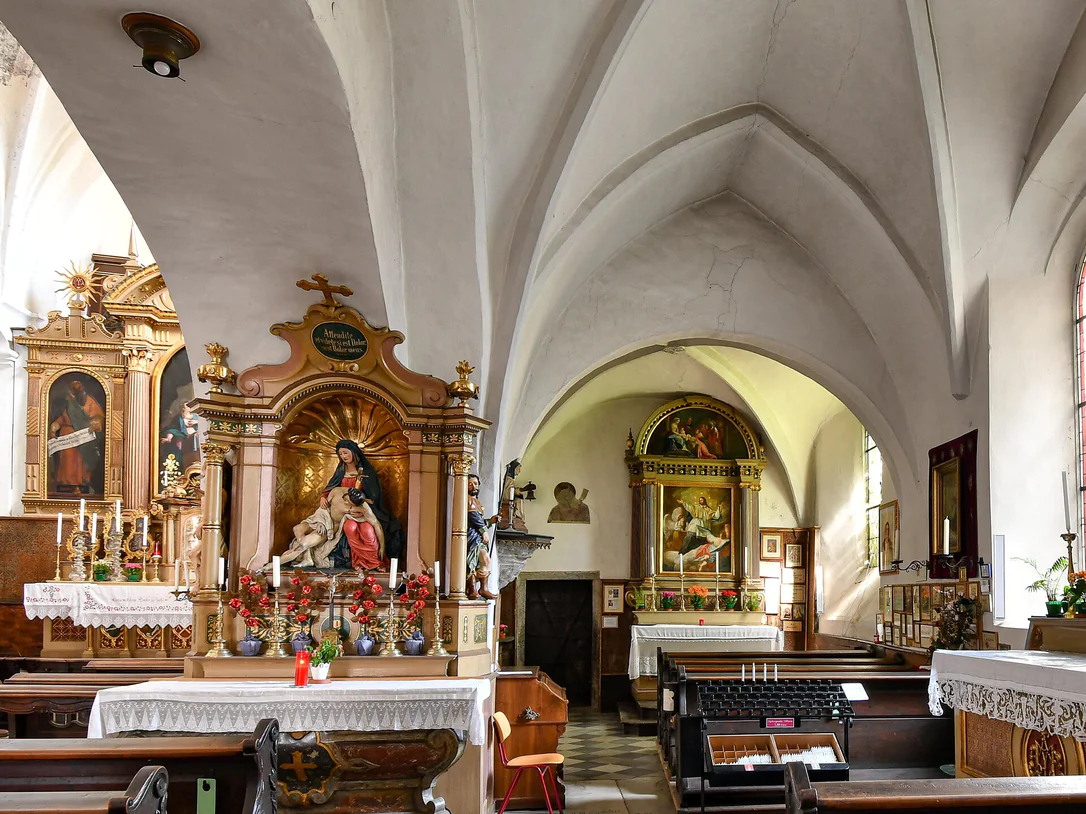The modest little church in Maria Saal was built in the mid-1600s and then was expanded in 1719. According to a local legend the miraculous image above the altar had originally hung in a sheep barn. Due to an ever-growing number of pilgrims then finally a church was built. Like many other churches, this one too was closed down under the reign of Joseph II. In 1847, it was re-inaugurated by prince bishop Johannes Tschiderer who celebrated his first mass in Collalbo on August 3rd 1800. Tschiderer was beatified by Pope John Paul II in 1996.
The rather particular motive, a fresco of the Madonna with an umbrella, in the round arch between presbytery and nave has contributed to this pilgrimage church’s popularity. The fresco was painted by Alexander Dejaco as an expression of gratitude for his unscathed return from World War I, leaning on the prayer “Under thy shield and protection we seek refuge, o holy mother of God”. This painting also takes on a special meaning as the Renon mountain is a rather arid area, thus its farmers would pray to the Holy Mother for rain in times of great draughts and water scarceness.



































































